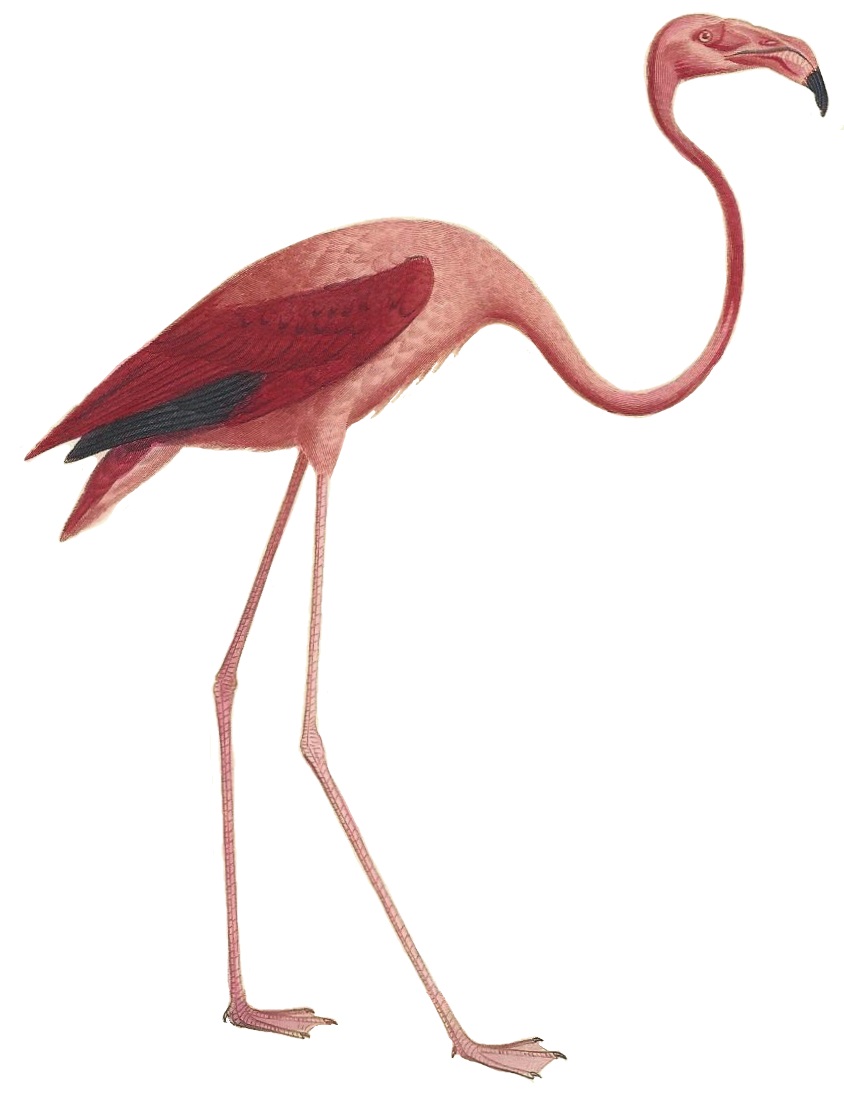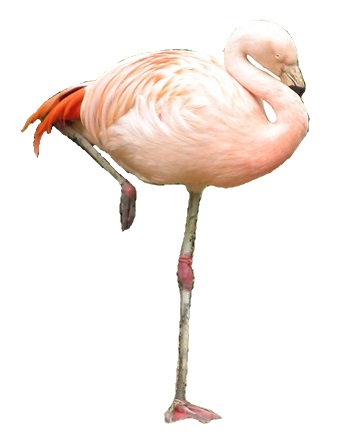|
Neoaves
Neoaves is a clade that consists of all modern birds (Neornithes or Aves) with the exception of Paleognathae (ratites and kin) and Galloanserae (ducks, chickens and kin). Almost 95% of the roughly 10,000 known species of extant birds belong to the Neoaves. The early diversification of the various neoavian groups occurred very rapidly around the Cretaceous–Paleogene extinction event, and attempts to resolve their relationships with each other have resulted initially in much controversy. Phylogeny The early diversification of the various neoavian groups occurred very rapidly around the Cretaceous–Paleogene extinction event. As a result of the rapid radiation, attempts to resolve their relationships have produced conflicting results, some quite controversial, especially in the earlier studies. Nevertheless, some recent large phylogenomic studies of Neoaves have led to much progress on defining orders and supraordinal groups within Neoaves. Still, the studies have failed to pro ... [...More Info...] [...Related Items...] OR: [Wikipedia] [Google] [Baidu] |
Bird
Birds are a group of warm-blooded vertebrates constituting the class Aves (), characterised by feathers, toothless beaked jaws, the laying of hard-shelled eggs, a high metabolic rate, a four-chambered heart, and a strong yet lightweight skeleton. Birds live worldwide and range in size from the bee hummingbird to the ostrich. There are about ten thousand living species, more than half of which are passerine, or "perching" birds. Birds have whose development varies according to species; the only known groups without wings are the extinct moa and elephant birds. Wings, which are modified forelimbs, gave birds the ability to fly, although further evolution has led to the loss of flight in some birds, including ratites, penguins, and diverse endemic island species. The digestive and respiratory systems of birds are also uniquely adapted for flight. Some bird species of aquatic environments, particularly seabirds and some waterbirds, have further evolved for swim ... [...More Info...] [...Related Items...] OR: [Wikipedia] [Google] [Baidu] |
Passerea
Passerea is a clade of neoavian birds that was proposed by Jarvis ''et al''. (2014). Their genomic analysis recovered two major clades within Neoaves, Passerea and Columbea, and concluded that both clades appear to have many ecologically driven convergent traits. According to Jarvis (2014), these convergences include the foot-propelled diving trait of grebes in Columbea with loons and cormorants in Passerea; the wading-feeding trait of flamingos in Columbea with ibises and egrets in Passerea; and pigeons and sandgrouse in Columbea with shorebirds (killdeer) in Passerea. For Jarvis (2014), these long-known trait and morphological alliances suggest that some of the traditional nongenomic trait classifications are based on polyphyletic assemblages. Passerea was not recovered in other studies.Prum, R. O. ''et al''. (2015A comprehensive phylogeny of birds (Aves) using targeted next-generation DNA sequencing Nature 526, 569–573. Phylogeny Cladogram of Passerea relationships based ... [...More Info...] [...Related Items...] OR: [Wikipedia] [Google] [Baidu] |
Cretaceous–Paleogene Extinction Event
The Cretaceous–Paleogene (K–Pg) extinction event (also known as the Cretaceous–Tertiary extinction) was a sudden mass extinction of three-quarters of the plant and animal species on Earth, approximately 66 million years ago. With the exception of some ectothermic species such as sea turtles and crocodilians, no tetrapods weighing more than survived. It marked the end of the Cretaceous Period, and with it the Mesozoic era, while heralding the beginning of the Cenozoic era, which continues to this day. In the geologic record, the K–Pg event is marked by a thin layer of sediment called the K–Pg boundary, which can be found throughout the world in marine and terrestrial rocks. The boundary clay shows unusually high levels of the metal iridium, which is more common in asteroids than in the Earth's crust. As originally proposed in 1980 by a team of scientists led by Luis Alvarez and his son Walter, it is now generally thought that the K–Pg extinction was ... [...More Info...] [...Related Items...] OR: [Wikipedia] [Google] [Baidu] |
Eurypygimorphae
Eurypygimorphae or Phaethontimorphae is a clade of birds that contains the orders Phaethontiformes (tropicbirds) and Eurypygiformes (kagu and sunbittern) recovered by genome analysis. The relationship was first identified in 2013 based on their nuclear genes. Historically these birds were placed at different parts of the tree, with tropicbirds in Pelecaniformes and the kagu and sunbittern in Gruiformes. Some genetic analyses have placed the eurypygimorph taxa in the controversial and obsolete clade Metaves, with uncertain placement within that group. More recent molecular studies support their grouping together in Eurypygimorphae, which is usually recovered as the sister taxon to Aequornithes within Ardeae Phaethoquornithes is a clade of birds that contains Eurypygimorphae and Aequornithes, found in 2014 by genome analysis. Members of Eurypygimorphae were originally classified in the obsolete group Metaves, and Aequornithes were classified as th ....Prum, R.O. ''et al''. ... [...More Info...] [...Related Items...] OR: [Wikipedia] [Google] [Baidu] |
Columbimorphae
Columbimorphae is a clade discovered by genome analysis that includes birds of the orders Columbiformes (pigeons and doves), Pterocliformes Sandgrouse is the common name for Pteroclidae , a family (biology), family of sixteen species of bird, members of the order Pterocliformes . They are traditionally placed in two Genus, genera. The two central Asian species are classified as ''Sy ... (sandgrouse), and Mesitornithiformes (mesites). Previous analyses had also recovered this grouping, although the exact relationships differed. Some studies indicated a sister relationship between sandgrouse and pigeons (the traditional view) while other studies favored a sister grouping of mesites and sandgrouse instead. References Neognathae {{bird-stub ... [...More Info...] [...Related Items...] OR: [Wikipedia] [Google] [Baidu] |
Turaco
The turacos make up the bird family Musophagidae ( "banana-eaters"), which includes plantain-eaters and go-away-birds. In southern Africa both turacos and go-away-birds are commonly known as loeries. They are semi-zygodactylous: the fourth (outer) toe can be switched back and forth. The second and third toes, which always point forward, are conjoined in some species. Musophagids often have prominent crests and long tails; the turacos are noted for peculiar and unique pigments giving them their bright green and red feathers. Traditionally, this group has been allied with the cuckoos in the order Cuculiformes, but the Sibley-Ahlquist taxonomy raises this group to a full order Musophagiformes. They have been proposed to link the hoatzin to the other living birds, but this was later disputed. Recent genetic analyses have strongly supported the order ranking of Musophagiformes. Musophagidae is one of very few bird families endemic to Africa, one other being the mousebirds, ... [...More Info...] [...Related Items...] OR: [Wikipedia] [Google] [Baidu] |
Otidimorphae
The Otidimorphae is a clade of birds that contains the orders Cuculiformes (cuckoos), Musophagiformes (turacos), and Otidiformes (bustards) identified in 2014 by genome analysis. While the bustards seem to be related to the turaco The turacos make up the bird family Musophagidae ( "banana-eaters"), which includes plantain-eaters and go-away-birds. In southern Africa both turacos and go-away-birds are commonly known as loeries. They are semi-zygodactylous: the fourth ( ...s, other genetic studies have found the cuckoos to be closer to the bustards than the turacos are. References Neognathae {{bird-stub ... [...More Info...] [...Related Items...] OR: [Wikipedia] [Google] [Baidu] |
Mirandornithes
Mirandornithes () is a clade that consists of flamingos and grebes. Many scholars use the term Phoenicopterimorphae for the superorder containing flamingoes and grebes. Determining the relationships of both groups has been problematic. Flamingos had been placed with numerous branches within Neognathae, such as ducks and storks. The grebes had been placed with the loons. However recent studies have confirmed these two branches as sister groups. Both primitive phoenicopteriformes and their closest relatives, the grebes, were highly aquatic.Mayr, G. (2014) The Eocene ''Juncitarsus'' – its phylogenetic position and significance for the evolution and higher-level affinities of flamingos and grebes. ''Comptes Rendus Palevol''. 13(1):9-18. https://doi.org/10.1016/j.crpv.2013.07.005 This indicates that the entire mirandornithe group evolved from aquatic, probably swimming ancestors. Synapomorphies According to Mayr (2004) and Sangster (2005) there are at least twelve distinct morpholo ... [...More Info...] [...Related Items...] OR: [Wikipedia] [Google] [Baidu] |
Columbea
Columbea is a clade suggested by genome analysis that contains Columbiformes (pigeons and doves), Pteroclidae (sandgrouse), Mesitornithidae (mesites) and Mirandornithes (flamingos and grebes). Until their recent placement as the sister taxon to Passerea, in the last decade various genetic analysis found them to be in the obsolete clade Metaves Metaves ("other birds") is a controversial group proposed by Fain & Houde (2004) and later rescued on the studies of Ericson ''et al.'' (2006)Ericson, P.G.P. ''et al.'' (2006Diversification of Neoaves: integration of molecular sequence data and f .... References Neognathae {{bird-stub ... [...More Info...] [...Related Items...] OR: [Wikipedia] [Google] [Baidu] |
Cuckoos
Cuckoos are birds in the Cuculidae family, the sole taxon in the order Cuculiformes . The cuckoo family includes the common or European cuckoo, roadrunners, koels, malkohas, couas, coucals and anis. The coucals and anis are sometimes separated as distinct families, the Centropodidae and Crotophagidae respectively. The cuckoo order Cuculiformes is one of three that make up the Otidimorphae, the other two being the turacos and the bustards. The family Cuculidae contains 150 species which are divided into 33 genera. The cuckoos are generally medium-sized slender birds. Most species live in trees, though a sizeable minority are ground-dwelling. The family has a cosmopolitan distribution; the majority of species are tropical. Some species are migratory. The cuckoos feed on insects, insect larvae and a variety of other animals, as well as fruit. Some species are brood parasites, laying their eggs in the nests of other species and giving rise to the metaphor ''cuckoo's egg'', bu ... [...More Info...] [...Related Items...] OR: [Wikipedia] [Google] [Baidu] |
Sunbittern
The sunbittern (''Eurypyga helias'') is a bittern-like bird of tropical regions of the Americas, and the sole member of the family Eurypygidae (sometimes spelled Eurypigidae) and genus ''Eurypyga''. It is found in Central and South America, and has three subspecies. The sunbittern shows both morphological and molecular similarities with the kagu (''Rhynochetos jubatus'') of New Caledonia, indicating a gondwanic origin, both species being placed in the clade Eurypygiformes.del Hoyo, J. Elliott, A. & Sargatal, J. (editors). (1996) ''Handbook of the Birds of the World. Volume 3: Hoatzin to Auks''. Lynx Edicions. Taxonomy The sunbittern is usually placed in the Gruiformes, but this was always considered preliminary. Altogether, the bird is most similar to another bird that was provisionally placed in the Gruiformes, the kagu (''Rhynochetos jubatus''). Molecular studies seem to confirm that the kagu and sunbittern are each other's closest living relatives and have a similar wing ... [...More Info...] [...Related Items...] OR: [Wikipedia] [Google] [Baidu] |
Telluraves
Telluraves (also called land birds or core landbirds) is a recently defined clade of birds defined by their arboreality. Based on most recent genetic studies, the clade unites a variety of bird groups, including the australavians (passerines, parrots, seriemas, and falcons) as well as the afroavians (including the Accipitrimorphae – eagles, hawks, buzzards, vultures etc. – owls and woodpeckers, among others). They appear to be the sister group of the Ardeae. Given that the most basal extant members of both Afroaves (Accipitrimorphae, Strigiformes) and Australaves (Cariamiformes, Falconiformes) are carnivorous, it has been suggested that the last common ancestor of all Telluraves was probably a predator. Other researchers are skeptical of this assessment, citing the herbivorous cariamiform '' Strigogyps'' as evidence to the contrary. Afroaves has not always been recovered as a monophyletic clade in subsequent studies. For instance, Prum ''et al.'' (2015) recovered the ac ... [...More Info...] [...Related Items...] OR: [Wikipedia] [Google] [Baidu] |

.jpg)
_white_background.jpg)


_(Tauraco_persa).jpg)



